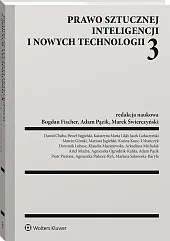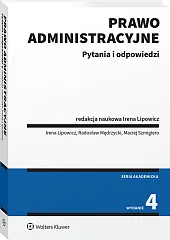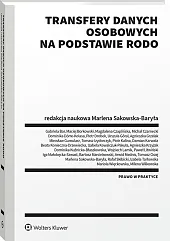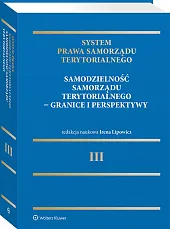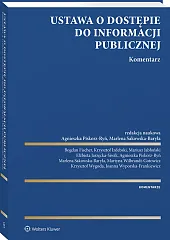Abbreviations | p. 11
Legislation | p. 13
Introduction | p. 19
Chapter 1
Basic concepts | p. 25
1.1. Drones as a new technical and social phenomenon | p. 25
1.2. Safety and innovation | p. 26
1.3. Unmanned aircraft | p. 31
1.4. The concept of model aircraft in the EU legislation | p. 32
1.5. Operator
...
Abbreviations | p. 11
Legislation | p. 13
Introduction | p. 19
Chapter 1
Basic concepts | p. 25
1.1. Drones as a new technical and social phenomenon | p. 25
1.2. Safety and innovation | p. 26
1.3. Unmanned aircraft | p. 31
1.4. The concept of model aircraft in the EU legislation | p. 32
1.5. Operator | p. 33
1.6. Pilot | p. 34
Chapter 2
Basic Regulation | p. 36
2.1. Matters covered | p. 37
2.2. Main recitals of Regulation 2018/1139 | p. 41
2.3. Essential requirements for unmanned aircraft (Article 55) | p. 44
2.4. Compliance of unmanned aircraft (Article 56) | p. 45
2.5. Articles 57 and 58 – non-legislative acts | p. 48
2.6. Essential requirements for unmanned aircraft (Annex IX) | p. 52
2.6.1. Essential requirements for the design, production, maintenance and operation of unmanned aircraft | p. 52
2.6.2. Additional essential requirements: certification or declaration of conformity | p. 58
2.6.3. Essential environmental requirements for unmanned aircraft | p. 76
2.6.4. Essential requirements for registration of unmanned aircraft and their operators and marking of unmanned aircraft | p. 77
Chapter 3
Implementing Regulation | p. 79
3.1. Normative part | p. 80
3.1.1. Subject matter of the regulation (Article 1) | p. 80
3.1.2. Definitions (Article 2) | p. 81
3.1.3. Categories of UAS operations (Article 3) | p. 81
3.1.4. Open category of UAS operations (Article 4) | p. 82
3.1.5. Specific category of UAS operations (Article 5) | p. 84
3.1.6. Certified category of UAS operations (Article 6) | p. 86
3.1.7. Rules and procedures for the operation of UAS (Article 7) | p. 90
3.1.8. Rules and procedures for the competency of unmanned aircraft pilots (Article 8) | p. 94
3.1.9. Minimum age for unmanned aircraft pilots (Article 9) | p. 96
3.1.10. Rules and procedures for the airworthiness of UAS (Article 10) | p. 99
3.1.11. Rules for conducting an operational risk assessment (Article 11) | p. 100
3.1.12. Authorisation of specific category operations (Article 12) | p. 104
3.1.13. Cross-border operations or operations outside the state of registration (Article 13) | p. 106
3.1.14. Registration of UAS operators and certified UAS (Article 14) | p. 109
3.1.15. Operating conditions for UAS geographical zones (Article 15) | p. 113
3.1.16. Operations with the use of UAS within model aircraft clubs and associations (Article 16) | p. 116
3.1.17. Designation of the competent authority (Article 17) | p. 118
3.1.18. Tasks of the competent authority (Article 18) | p. 118
3.1.19. Safety information (Article 19) | p. 122
3.1.20. Specific provisions on the use of certain unmanned aircraft systems in the open category (Article 20) | p. 123
3.1.21. Adaptation of authorisations, declarations and certificates (Article 21) | p. 124
3.1.22. Transitional provisions (Article 22) | p. 125
3.1.23. Entry into force and application (Article 23) | p. 126
3.2. Annex. Operations with unmanned aircraft systems in the open and specific categories | p. 127
3.2.1. Part A – Operations in the open category | p. 127
3.2.2. Part B – Operations in the specific category | p. 137
3.2.3. Part C – Light UAS Operator Certificate (LUC) | p. 150
3.3. Appendix 1: For standard scenarios supporting a declaration | p. 159
3.3.1. Chapter I: STS-01 – VLOS over a controlled ground area in a populated environment | p. 159
3.3.2. Chapter II: STS-02 – BVLOS with airspace observers over a controlled ground area in a sparsely populated environment | p. 169
3.4. Appendices 2–5 | p. 173
Chapter 4
Delegated Regulation | p. 182
4.1. Definitions | p. 183
4.2. Open category, specific category under operational declaration, accessories kit bearing a class identification label and remote identification add-ons | p. 184
4.3. Procedures | p. 189
4.3.1. Internal production control as set out in Part 7 of the Annex (Article 13(2)(a)) | p. 190
4.3.2. EU-type examination followed by conformity to type based on internal production control as set out in Part 8 of the Annex (Article 13(2)(b)) | p. 192
4.3.3. Conformity based on full quality assurance as set out in Part 9 of the Annex (Article 13(2)(c)) | p. 198
4.4. EU declaration of conformity and CE marking | p. 201
4.5. Obligations of economic operators | p. 205
4.6. Certified and specific categories, with the exclusion of operations under a declaration | p. 210
4.7. Parts 1–6, 16 and 17 of the Annex to Delegated Regulation | p. 212
Chapter 5
Protection of personal data in the operation of unmanned aircraft | p. 213
5.1. Introduction: Legal and technological conditions | p. 213
5.2. Right to privacy in relation to the use of drones | p. 221
5.2.1. Right to privacy | p. 221
5.2.2. System of guarantees for the right to privacy | p. 226
5.2.3. Risks to information privacy associated with the use of drones | p. 228
5.3. Right to protection of personal data in relation to the use of unmanned aircraft | p. 229
5.3.1. Right to protection of personal data | p. 229
5.3.2. Guarantees of personal data protection | p. 233
5.3.3. Scope of the GDPR | p. 238
5.4. Personal data, data processing and steps to be taken prior to conducting drone operations in order for the processing to be lawful | p. 241
5.4.1. Personal data | p. 241
5.4.2. Processing of personal data | p. 246
5.4.3. Prerequisites for the lawfulness of personal data processing | p. 247
5.4.4. Accountability principle – principles governing the processing of personal data | p. 252
5.4.5. Areas of personal data processing in the operation of drones under the GDPR | p. 255
5.5. Subjective conditions under the GDPR: Drone operator as a controller or a processor | p. 256
5.6. Obligations of drone operators with regard to the lawfulness of processing | p. 265
5.7. Records of processing activities | p. 269
5.8. Obligations of drone operators with regard to the exercise of the rights of data subjects | p. 271
5.9. Risk assessment with regard to the rights and freedoms of natural persons | p. 275
5.10. Obligations of drone operators with regard to data processing security | p. 277
5.11. Data protection impact assessment | p. 280
5.12. Personal data breaches and notification obligations | p. 282
5.13. Protection of personal data with regard to registration of UAS operators | p. 286
5.14. Final remarks | p. 288
Summary | p. 291
Schemes | p. 293
References | p. 315
![]() The first complete overview of drone regulations in the European Union provides legal commentaries to regulations on unmanned aircraft systems. It aims to answer many questions that arise when applying the new European regulations, to give tips and clues for different recipients (pilots, operators, employers, state aviation authorities) and to explain issues that may be unclear for lawyers but also people not used to working on acts of law.
The first complete overview of drone regulations in the European Union provides legal commentaries to regulations on unmanned aircraft systems. It aims to answer many questions that arise when applying the new European regulations, to give tips and clues for different recipients (pilots, operators, employers, state aviation authorities) and to explain issues that may be unclear for lawyers but also people not used to working on acts of law.![]() The first complete overview of drone regulations in the European Union provides legal commentaries to regulations on unmanned aircraft systems. It aims to answer many questions that arise when applying the new European regulations, to give tips and clues for different recipients (pilots, operators, employers, state aviation authorities) and to explain issues that may be unclear for lawyers but also people not used to working on acts of law.
The first complete overview of drone regulations in the European Union provides legal commentaries to regulations on unmanned aircraft systems. It aims to answer many questions that arise when applying the new European regulations, to give tips and clues for different recipients (pilots, operators, employers, state aviation authorities) and to explain issues that may be unclear for lawyers but also people not used to working on acts of law.![]() This book is addressed to people who in their professional practice will apply European regulations governing the use of drones, their design, construction, introduction to the market, etc. These may include lawyers - persons providing legal assistance, judges, public administration officials – but not only. The authors' intention, which is reflected in the construction of individual chapters and a broader presentation of practical issues, is that this book should be useful for people using aircraft in their professional activity - entrepreneurs providing services using them, involved in design, construction, marketing, as well as the certification process.
This book is addressed to people who in their professional practice will apply European regulations governing the use of drones, their design, construction, introduction to the market, etc. These may include lawyers - persons providing legal assistance, judges, public administration officials – but not only. The authors' intention, which is reflected in the construction of individual chapters and a broader presentation of practical issues, is that this book should be useful for people using aircraft in their professional activity - entrepreneurs providing services using them, involved in design, construction, marketing, as well as the certification process.

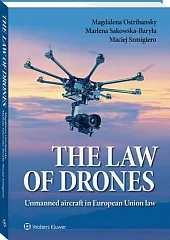


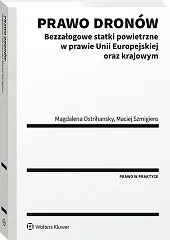
![Aplikacja mObywatel. Komentarz [PRZEDSPRZEDAŻ] Aplikacja mObywatel. Komentarz [PRZEDSPRZEDAŻ]](https://static.profinfo.pl/storage/image/core_files/2018/7/9/27a64bcbbfc87e53675ee6e93c8a1ca4/admin/profinfo_product/PRZEDSPRZEDAZ_C_800.gif.webp)
